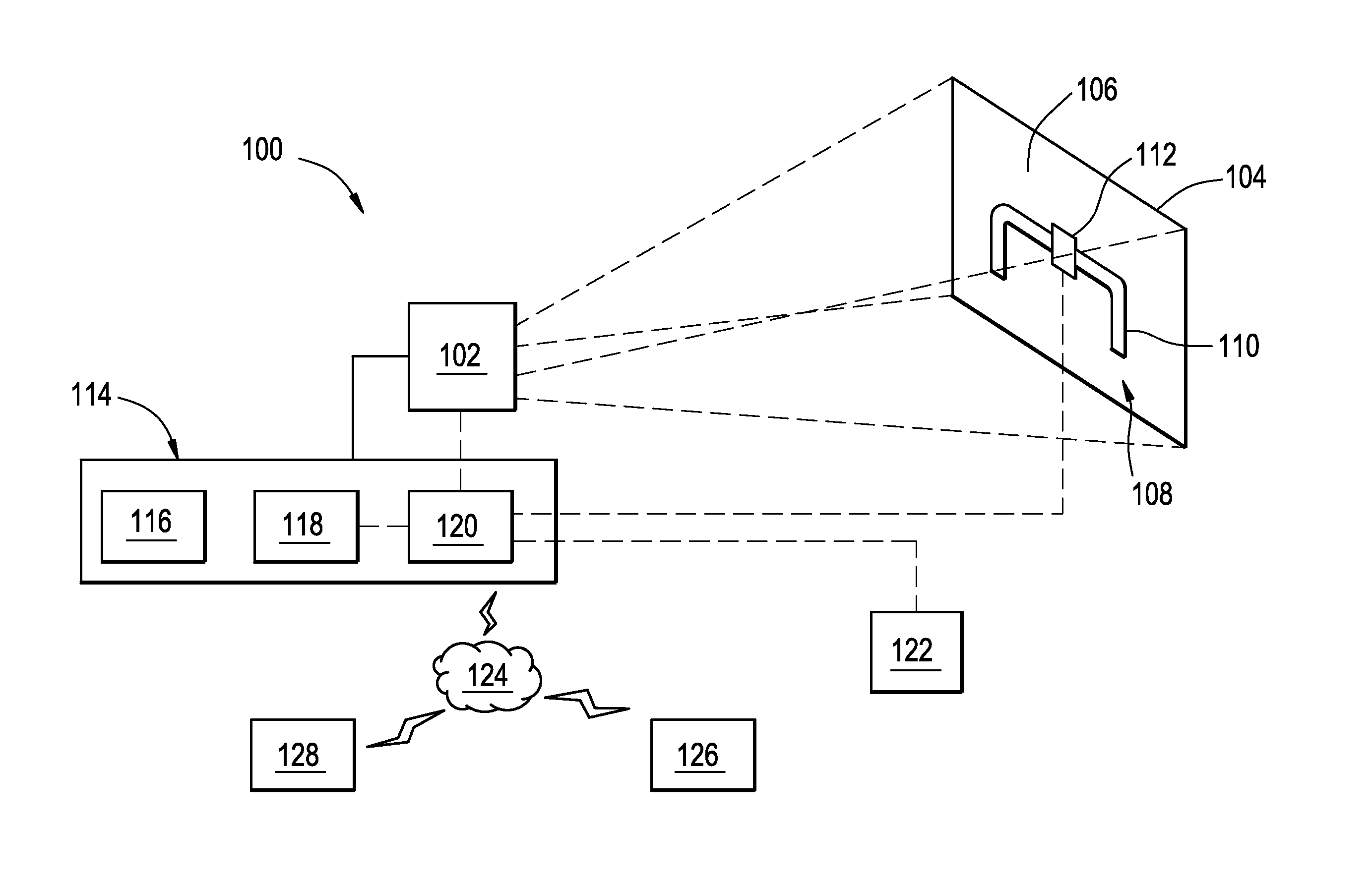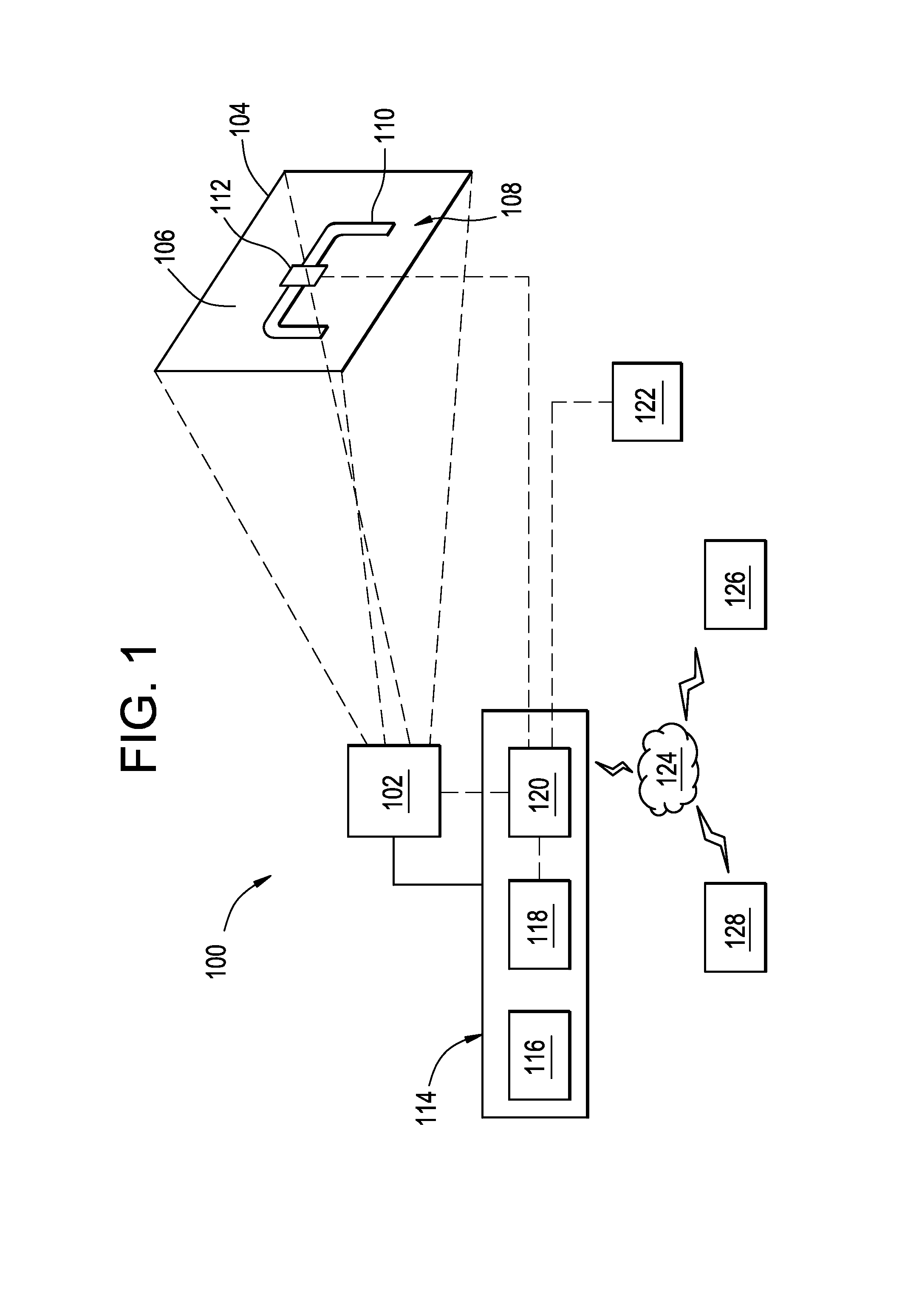System and method for leak detection
a leak detection and system technology, applied in the field of leak detection, can solve the problems of unreliable detection of specific temperature on the temperature distribution as an indicator of leakage or spillage, labor-intensive sniffer systems, and inability to provide robust solutions for the broad range of fluids, so as to achieve the effect of reducing false alarms
- Summary
- Abstract
- Description
- Claims
- Application Information
AI Technical Summary
Benefits of technology
Problems solved by technology
Method used
Image
Examples
Embodiment Construction
[0021]FIG. 1 illustrates a schematic diagram of an example of an optical detection system 100 that can detect effluent that occurs at targets under observation, e.g., pipelines. The optical detection system 100 includes an image capture device 102 with a field of view 104 that captures image data of a scene 106. In the example of FIG. 1, the scene 106 includes a target 108 with one or more sections of a pipe 110 with a coupling valve 112 secured thereto. The optical detection system 100 also includes one or more components 114, which may include an image processor 116, a display 118, and a controller 120. However, although shown as separate components 114, this disclosure further contemplates configurations of the image capture device 102 that may include features and functions of one or more of the display 118 and / or components of the image processor 116. Examples of the controller 120 may communicate with the image capture device 102 and the display 118, as well as with a remote a...
PUM
 Login to View More
Login to View More Abstract
Description
Claims
Application Information
 Login to View More
Login to View More - R&D
- Intellectual Property
- Life Sciences
- Materials
- Tech Scout
- Unparalleled Data Quality
- Higher Quality Content
- 60% Fewer Hallucinations
Browse by: Latest US Patents, China's latest patents, Technical Efficacy Thesaurus, Application Domain, Technology Topic, Popular Technical Reports.
© 2025 PatSnap. All rights reserved.Legal|Privacy policy|Modern Slavery Act Transparency Statement|Sitemap|About US| Contact US: help@patsnap.com



